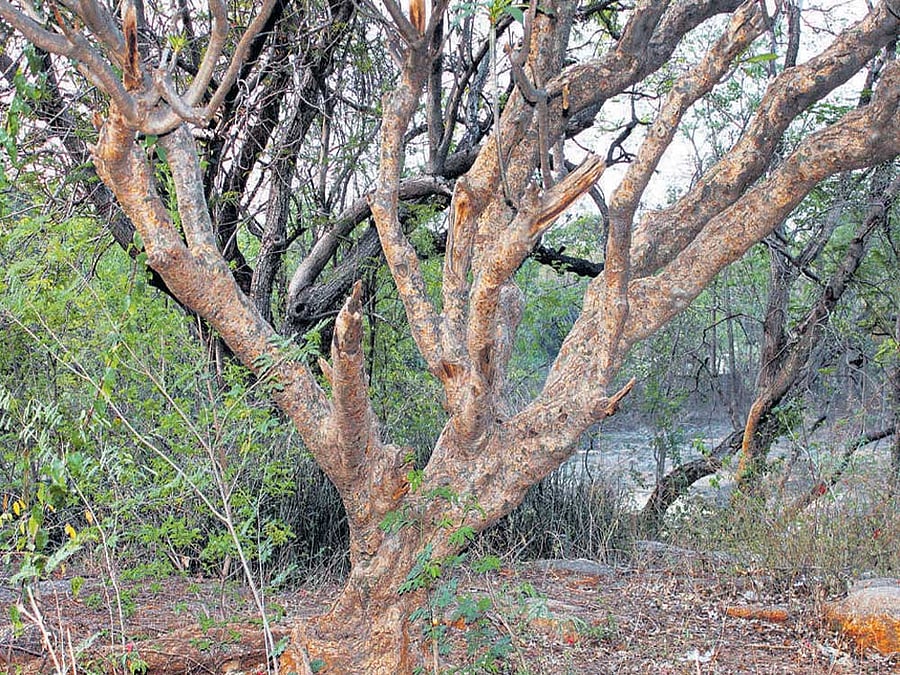My exposure to the campus began with walks along the black roads and over the weeks, I moved along the brown paths as well. Trees touched these roads and paths, and I loved touching them. As weeks turned to months I saw newer open spaces and also came across the hornbill and the ibis. After little more than a year of walking the campus I got a cycle. This enabled me to move into newer areas and I had fun seeking fresh paths and patches with trees and rocks. These patches, where nature still reigned, I coined as ‘nature patches’. The largest amongst these was once a deer park. This park is said to have around 100 deers at one point in time.
The beauty of Bhagavad Gita, people believe is that each time you read it, it presents a new meaning. Similarly every time one moves around amidst these creations of nature, one experiences something new. During monsoon, the paths I cycle on are only twice the width of the tyres and my legs brush the wet vegetation. Pools, shape of a saucer, emerge. They often have leaves silently lying in their clear waters. As the rains taper off and the path gets wider, dominant greens of the vegetation transforms to accommodating browns, and the rocks, which lie all around the campus, slowly raise their heads.
Not all these changes are easy to comprehend. They bring in the realisation that one does not know it all. Some birds, for example, are more visible during some stretches of the year. What drives them or where they go remain a mystery to me. During the monsoon drizzle, I have come across around red avadavats in flocks of 15 to 20. Sometime around Deepavali, the hoopoe and coucal appear to frequent the paths. A day before Christmas, I finally saw the woodpecker! Around this time, I also came across the peafowl, moving around with younger ones, in flocks of three to five. Then of course there are the babblers and partridges.
Savouring these patches is more akin to enjoying the rains or the sunsets. It is also about being open to surprises - to look forward to the unknown and planned. It is neither about the ecological role of these patches (water level, carbon and more) nor about how we need to leave these for the generations to come. This is also not about using these patches for environment education or botany classes. It is selfishly about us, and about being amidst trees and silences. These are not just lungs of our city but also its soul. To quote Richard Louv, an American writer, this is “a different way to look at the future that is not just about survival, but about something much better”.
On the one hand we need to ensure that we retain what we have and not let our ‘managerial’ instincts take over. Once we play our part these nature patches will play their roles. Many of our urban areas still harbour these nature patches. It may augur well to be able to hear these sounds as we continue our march on the path to urbanisation.

